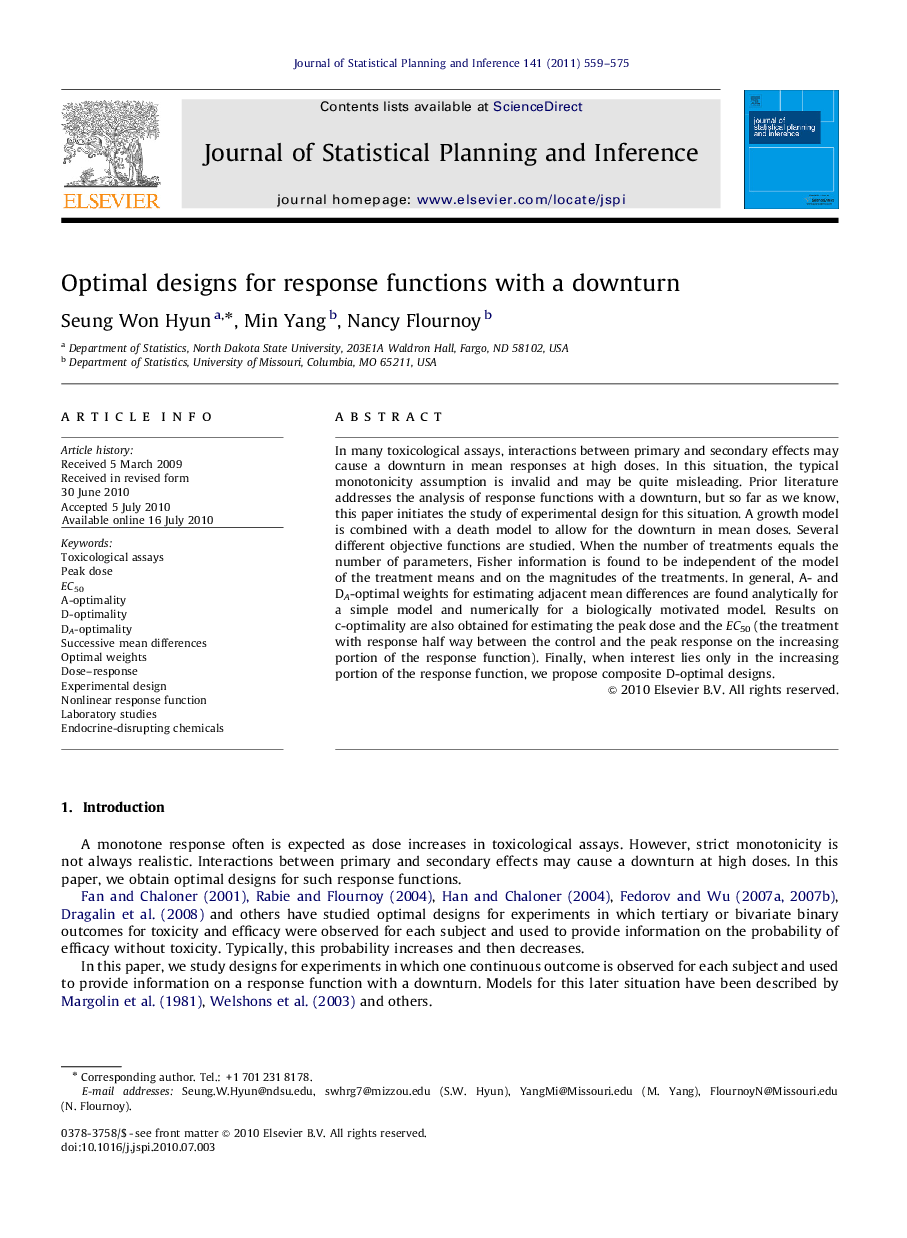| Article ID | Journal | Published Year | Pages | File Type |
|---|---|---|---|---|
| 1150148 | Journal of Statistical Planning and Inference | 2011 | 17 Pages |
Abstract
In many toxicological assays, interactions between primary and secondary effects may cause a downturn in mean responses at high doses. In this situation, the typical monotonicity assumption is invalid and may be quite misleading. Prior literature addresses the analysis of response functions with a downturn, but so far as we know, this paper initiates the study of experimental design for this situation. A growth model is combined with a death model to allow for the downturn in mean doses. Several different objective functions are studied. When the number of treatments equals the number of parameters, Fisher information is found to be independent of the model of the treatment means and on the magnitudes of the treatments. In general, A- and DA-optimal weights for estimating adjacent mean differences are found analytically for a simple model and numerically for a biologically motivated model. Results on c-optimality are also obtained for estimating the peak dose and the EC50 (the treatment with response half way between the control and the peak response on the increasing portion of the response function). Finally, when interest lies only in the increasing portion of the response function, we propose composite D-optimal designs.
Keywords
Related Topics
Physical Sciences and Engineering
Mathematics
Applied Mathematics
Authors
Seung Won Hyun, Min Yang, Nancy Flournoy,
